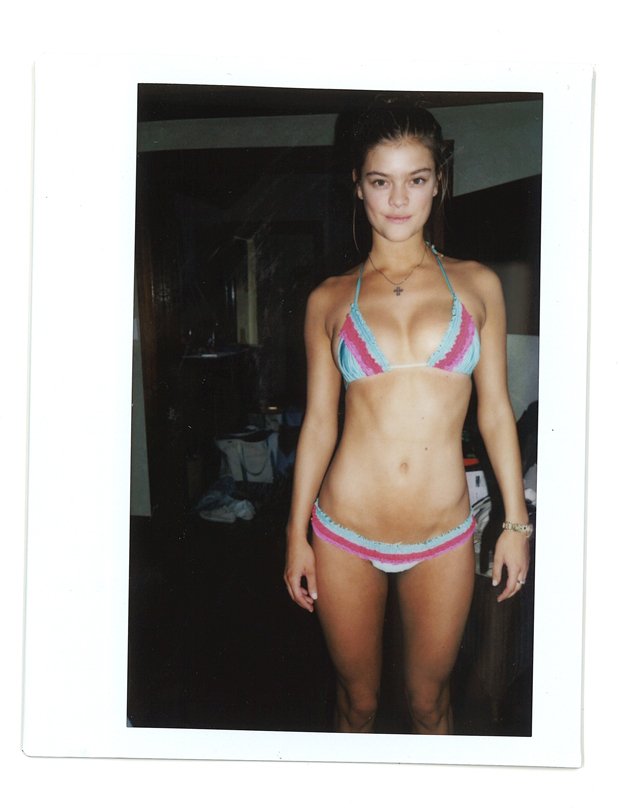Is the line between privacy and public exposure becoming increasingly blurred in today's digital landscape? A bold statement emerges as we delve into the complexities of a recent scandal involving Danish model Nina Agdal. This incident raises significant questions about consent, media responsibility, and the ramifications of leaked content on an individual's personal and professional life.
The controversy surrounding Nina Agdal has captured global attention, with allegations pointing towards Dillon Danis, a mixed martial artist associated with UFC. Reports suggest that during a legal proceeding, a video was presented as evidence against Danis. The situation has sparked widespread debate, not only concerning the authenticity of the video but also regarding the ethical boundaries crossed in its dissemination. Public figures such as Andrew Schulz have weighed in, discussing the implications of fabricated tapes and their potential to damage reputations irreparably. Meanwhile, the UFC faces scrutiny for its handling of the matter, leaving many to question whether punitive measures should have been more stringent.
| Personal Information | Details |
|---|---|
| Name | Nina Agdal |
| Date of Birth | March 27, 1989 |
| Place of Birth | Aalborg, Denmark |
| Profession | Model |
| Career Highlights | Sports Illustrated Swimsuit Issue model; Victoria's Secret Angel (2016-2018) |
| Education | Completed high school in Denmark |
| Relationship Status | Engaged to Logan Paul |
| Reference Website | Victoria's Secret Official Website |
As details of the scandal unfold, it becomes evident that the repercussions extend far beyond mere gossip. Nina Agdal, known for her work with prestigious brands like Victoria’s Secret and Sports Illustrated, now finds herself at the center of a storm that threatens to overshadow her career achievements. The leaked material, purportedly featuring intimate moments, has circulated rapidly across various platforms, drawing both condemnation and sympathy from the public. Social media reactions range from outrage over invasion of privacy to dismissive comments trivializing the severity of the breach.
In response to the leak, several advocacy groups have highlighted the urgent need for stricter regulations governing the distribution of non-consensual explicit content. They argue that existing laws often fall short when addressing the nuances of digital exploitation. Furthermore, they emphasize the psychological toll such incidents can impose on victims, urging society to approach these matters with sensitivity rather than voyeuristic curiosity. Legal experts predict that this case could set a precedent for future litigation involving similar breaches of confidentiality.
Meanwhile, the sports community is divided over the UFC's decision not to disqualify Dillon Danis despite his alleged involvement in sharing the contentious footage. Critics claim that the organization failed to uphold standards of integrity by allowing him to continue competing without facing appropriate consequences. Conversely, supporters maintain that disciplinary actions must align with established protocols and avoid hasty judgments based solely on public pressure. Regardless of stance, the incident underscores the broader issue of accountability within high-profile industries where personal lives intersect with professional obligations.
Beyond the immediate fallout, there exists a pressing concern about how such scandals perpetuate harmful stereotypes and reinforce gender biases. Women, particularly those in entertainment or modeling, frequently endure disproportionate scrutiny compared to their male counterparts. This disparity manifests in the way their private lives are scrutinized under a microscope while simultaneously being used to fuel sensational narratives. Advocates stress the importance of fostering environments where individuals feel safe expressing themselves without fear of retribution or exploitation.
Technological advancements have undeniably transformed communication methods, yet they also present unprecedented challenges regarding data protection and user consent. Platforms hosting illicit materials face mounting pressure to implement robust safeguards preventing unauthorized uploads. Simultaneously, users must exercise caution when sharing sensitive information online, recognizing the permanence of digital footprints. Education plays a pivotal role here—raising awareness about responsible internet usage and promoting digital literacy among all demographics.
Amidst the noise generated by viral clips and heated discussions, one cannot overlook the human element underlying these events. For Nina Agdal, who built a successful career predicated on confidence and poise, this ordeal represents a profound betrayal of trust. Her journey serves as a poignant reminder of the fragility inherent in maintaining privacy amidst relentless public gaze. As she navigates this challenging phase, supporters rally behind her, hoping she emerges stronger and continues inspiring others through her resilience.
Ultimately, the saga encapsulates broader societal issues demanding collective introspection. How do we balance freedom of expression with respect for individual rights? What steps can institutions take to ensure fairness and transparency in adjudicating disputes involving digital content? And most importantly, how can we cultivate empathy in our interactions, ensuring no one feels dehumanized or objectified due to circumstances beyond their control?
In conclusion, while the specifics of this particular incident may fade with time, the lessons learned will undoubtedly shape discourse around privacy, ethics, and technology moving forward. By engaging in thoughtful dialogue and advocating for systemic changes, we contribute toward creating safer spaces where everyone enjoys equal opportunities to thrive without compromising their dignity.



